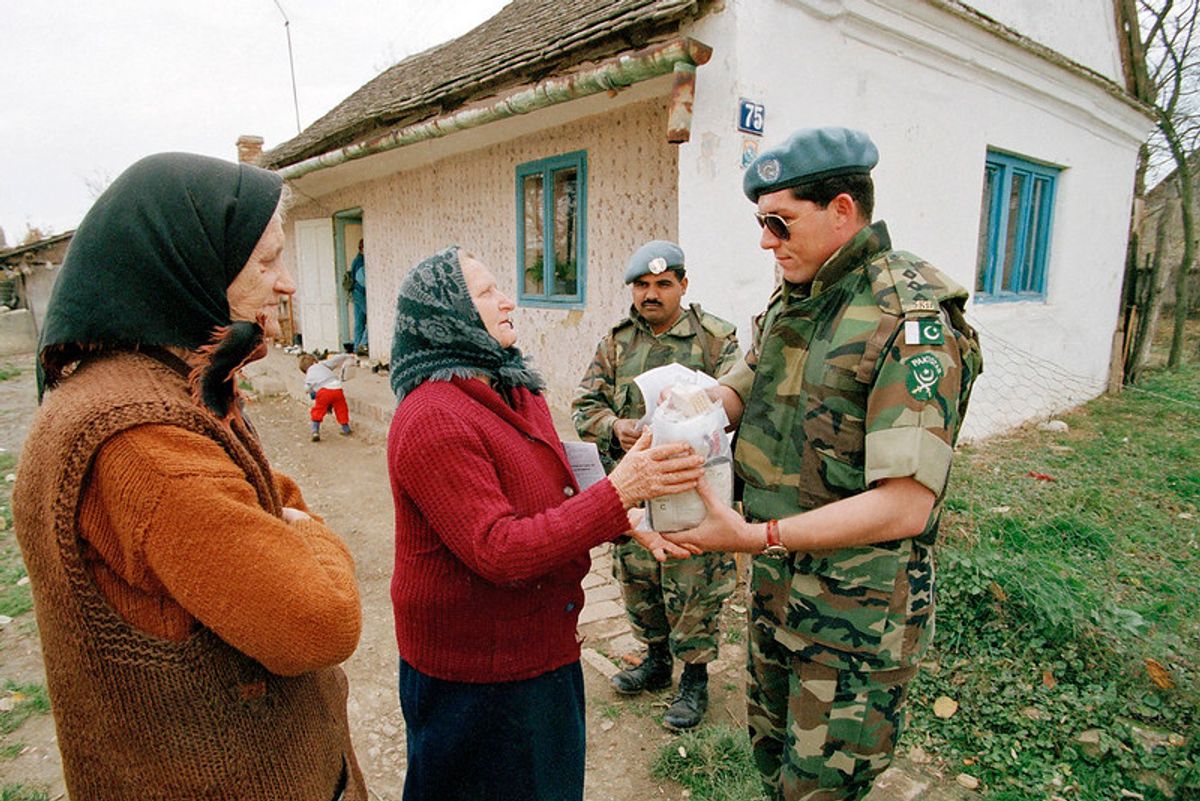The UN has worked tirelessly to end wars and prevent conflicts. COVID-19 could make it harder.

In 1945, the world had just endured the bloodiest war in history. World leaders were determined to not repeat the mistakes of the past. They wanted to build a better future, one free from the "scourge of war" so they signed the UN Charter — creating a global organization of nations that could deter and repel aggressors, mediate conflicts and broker armistices, and ensure collective progress.
Over the following 75 years, the UN played an essential role in preventing, mitigating or resolving conflicts all over the world. It faced new challenges and new threats — including the spread of nuclear weapons and other weapons of mass destruction, a Cold War and brutal civil wars, transnational terrorism and genocides. Today, the UN faces new tensions: shifting and more hostile geopolitics, digital weaponization, a global pandemic, and more.
This slideshow shows how the UN has worked to build peace and security around the world:
Photo credit: UN Photo/Eric Kanalstein
After the Cold War ended, there was a rapid increase in the number of peacekeeping operations. Between 1989 and 1994 alone, there were 20 new operations and the number of peacekeepers grew from 11,000 to 75,000. In the mid-1990s, there were three challenging peacekeeping operations that caused setbacks but the essential role of UN Peacekeeping was soon re-affirmed.
Photo credit: UN Photo/Eric Kanalstein













